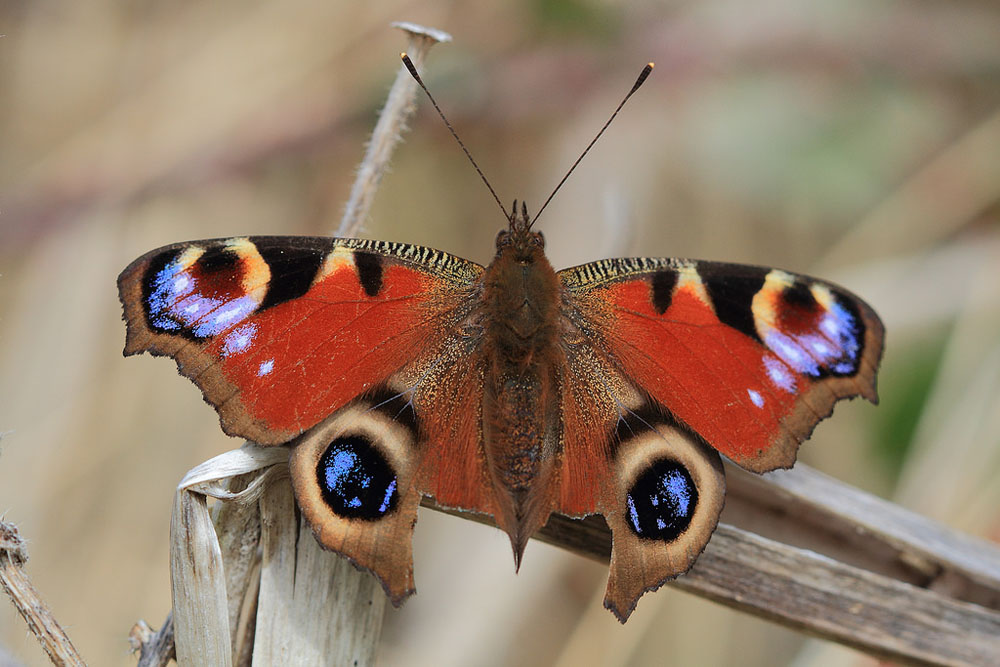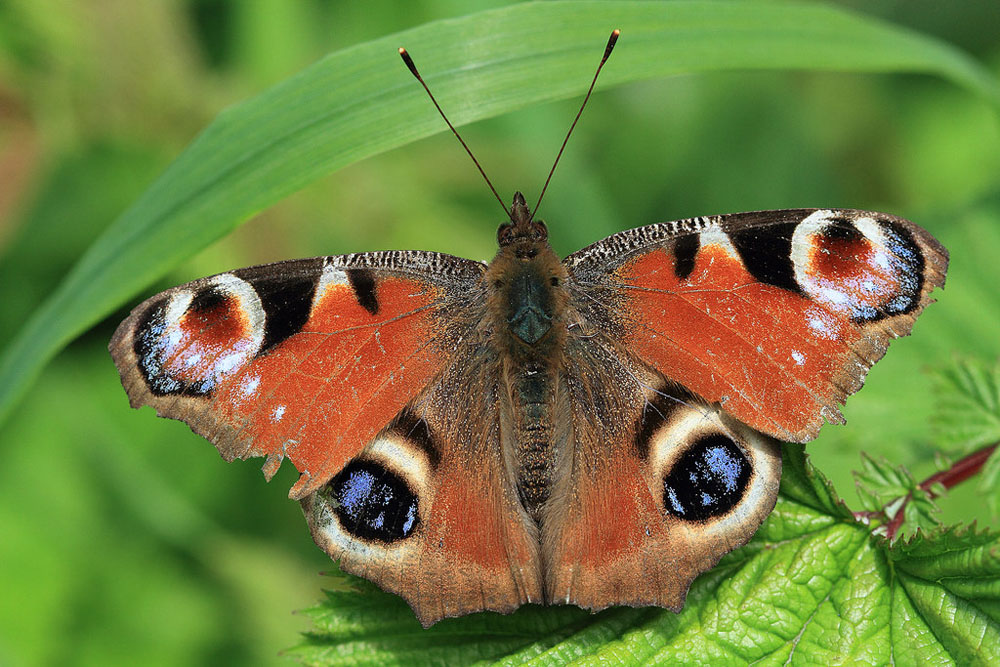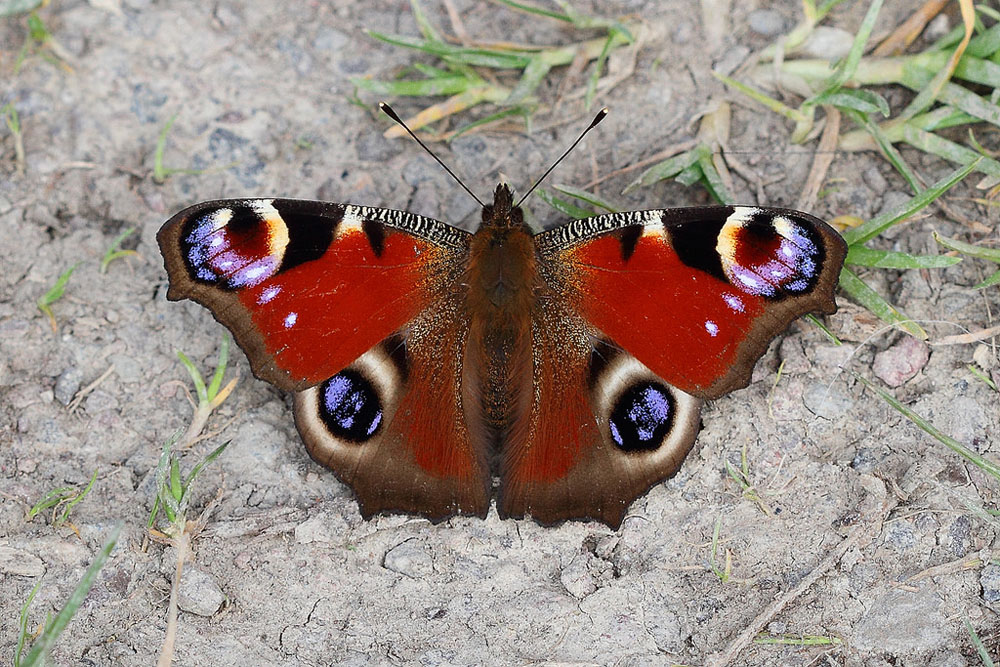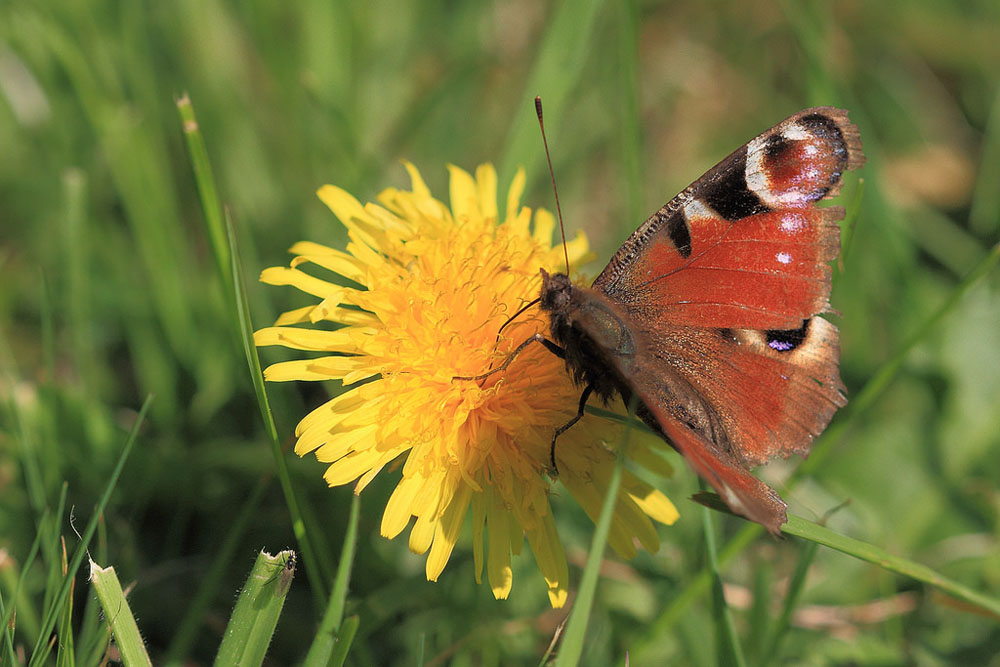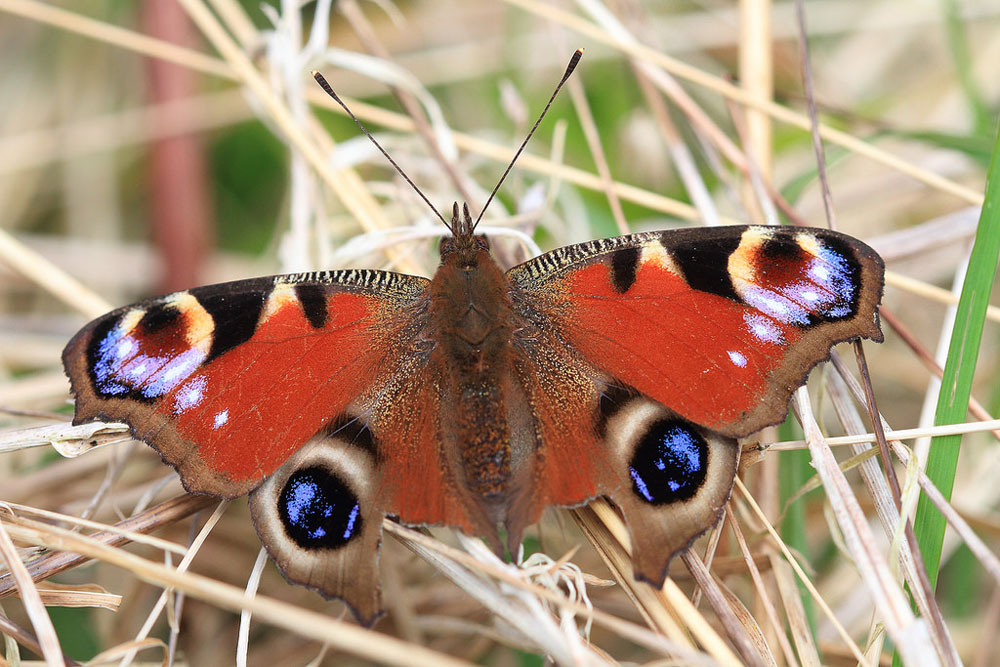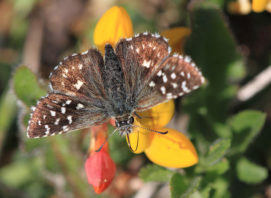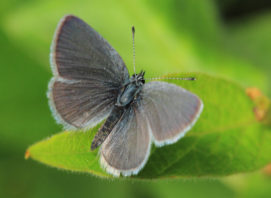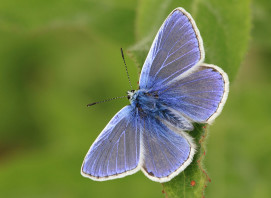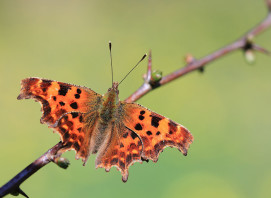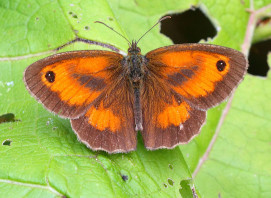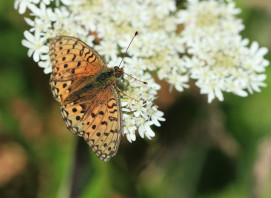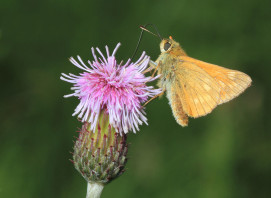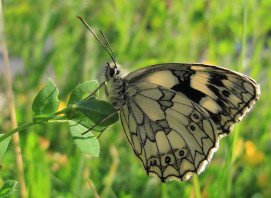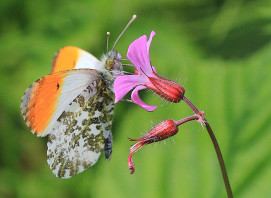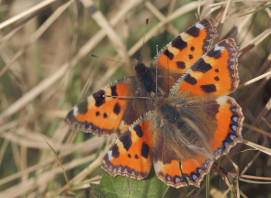Peacock
Perhaps a more appropriate name for the beautiful Peacock butterfly would be the ‘Owl’ – for if you rotate the view of the adult upside down you will notice that the twin hindwings assume the image of a Little Owl peering angrily from behind the forewings. The more one looks, the more realistic this appears: the fur and scales between the eyes sweep back towards a dark, rounded profile that is topped by two small ear tuffs. The butterfly’s cigar-shaped body looks very beak like.
The second line of defense is to flash the wings open when an enemy comes near, simultaneously rubbing the forewings and hind-wings together to produce a warning hiss from the friction between elevated veins at the base of each surface. As Jeremy Thomas amusingly points out in his, ‘The Butterflies of Britain & Ireland’, “the shock to a mouse must be severe when, after sniffling to investigate an appetizing insect odor on the bark, a glaring owl suddenly looms above it, rustling and hissing dangerously.” As if these defenses were not enough, Thomas then goes on to explain how the Peacock’s hiss, created by rubbing together its wing membranes, is over-scored with ultrasonic clicks. These startle and deter any bat that encounters the adult butterfly in late summer, perhaps if they enter the same tree hole at the start of the hibernation period.
Pic 5: It was great to see the Peacocks awakening on a beautiful, warm day of Spring! They fed on a wide variety of flowers. The males supped mainly in the morning, but soon started wandering. This particular male was establishing his territory near the ground. Typical territories were situated beneath the sunny edges of a wood or tall hedge and were usually near a roost site. Corners were especially favoured, for it was here, above all, that females were most likely to fly.
The male swooped up to investigate any dark object that flew over his territory. Indeed, the feisty Peacocks would flutter above my head before moving off and would you believe it, I even witnessed a bird being challenged!

